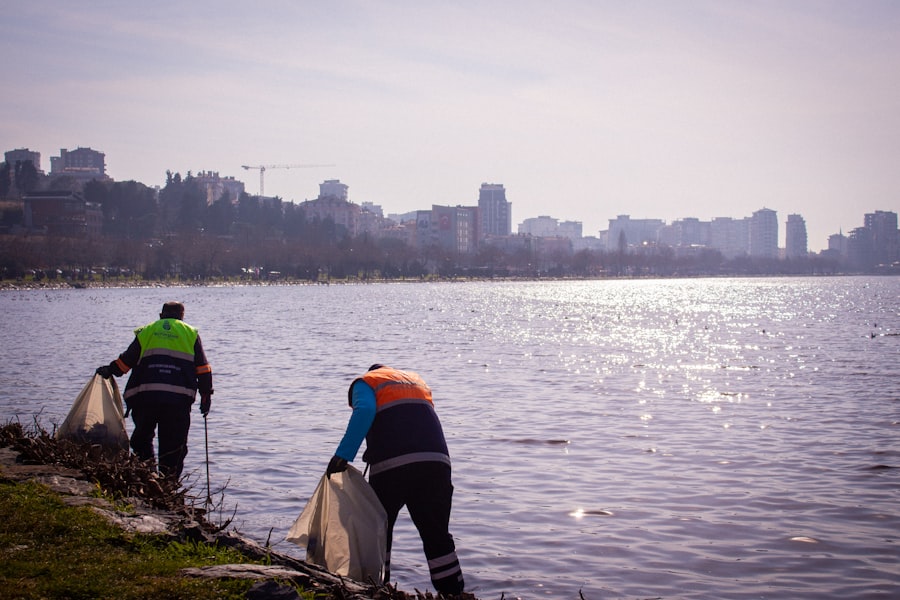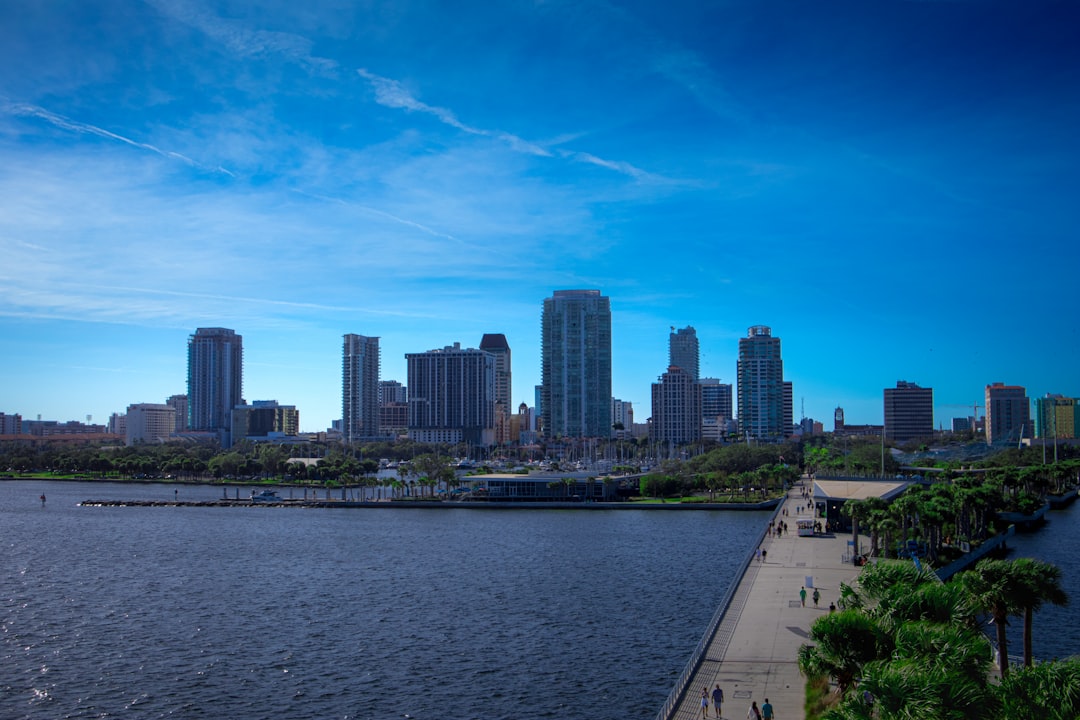As the world grapples with the escalating effects of climate change, coastal cities find themselves at the forefront of this environmental crisis. These urban areas, often characterized by their proximity to the ocean, are increasingly vulnerable to a myriad of challenges posed by rising temperatures, extreme weather events, and shifting ecosystems. The consequences of climate change are not merely theoretical; they manifest in tangible ways that threaten the very fabric of life in these regions.
From increased flooding and erosion to the loss of biodiversity, the impacts are profound and far-reaching. Coastal cities, home to millions of people and critical economic hubs, face an urgent need to adapt to these changes. The interplay between human activity and natural systems has created a precarious situation where the stakes are high.
As sea levels rise and storms become more intense, the resilience of these urban environments is put to the test. The urgency of addressing climate change in coastal cities cannot be overstated, as their survival hinges on innovative solutions and proactive measures that prioritize sustainability and community well-being.
Key Takeaways
- Rising sea levels pose a significant threat to coastal cities, impacting infrastructure and urban planning.
- Urban planning and infrastructure must adapt to the changing environment to mitigate the impact of climate change on coastal cities.
- Technology plays a crucial role in addressing challenges faced by coastal cities, such as monitoring sea levels and developing sustainable solutions.
- Balancing development and sustainability is essential for the economic well-being of coastal cities in the face of climate change.
- Social equity and environmental justice must be prioritized in coastal city planning to ensure resilience and inclusivity in the face of climate change.
Rising Sea Levels: The Threat to Coastal Cities
One of the most pressing threats posed by climate change is the rise in sea levels, a phenomenon driven by melting ice caps and thermal expansion of seawater. Coastal cities are particularly susceptible to this threat, as even a modest increase in sea levels can lead to significant flooding and erosion. For instance, cities like Miami and New Orleans have already begun to experience the consequences of rising waters, with neighborhoods facing regular inundation during high tides and storms.
This not only disrupts daily life but also poses a risk to infrastructure, homes, and local economies. The implications of rising sea levels extend beyond immediate physical damage; they also encompass long-term socio-economic challenges. As areas become uninhabitable due to flooding, populations may be forced to relocate, leading to displacement and potential conflicts over resources.
Furthermore, the economic ramifications are substantial, as property values decline and insurance costs soar. Coastal cities must confront these realities head-on, developing strategies that not only mitigate the impacts of rising sea levels but also promote adaptive resilience among their communities.
Urban Planning and Infrastructure: Adapting to the Changing Environment

In response to the threats posed by climate change, urban planning and infrastructure development in coastal cities must evolve. Traditional approaches that prioritize short-term gains often fall short in addressing the long-term challenges posed by environmental changes. Planners and policymakers are increasingly recognizing the need for integrated strategies that consider both ecological sustainability and community needs.
This shift involves rethinking land use, transportation systems, and public spaces to create resilient urban environments. Innovative approaches such as “green infrastructure” are gaining traction in coastal city planning. This concept emphasizes the use of natural systems—such as wetlands, parks, and green roofs—to manage stormwater, reduce flooding, and enhance biodiversity.
By incorporating these elements into urban design, cities can create multifunctional spaces that provide ecological benefits while also serving as recreational areas for residents.
The Role of Technology in Mitigating Coastal City Challenges
| Challenges | Technology | Mitigation |
|---|---|---|
| Rising sea levels | Smart sea walls | Prevents flooding and erosion |
| Storm surges | Early warning systems | Alerts residents and authorities |
| Coastal erosion | Beach nourishment | Restores and protects shorelines |
| Water pollution | Smart waste management | Reduces contamination and improves water quality |
Technology plays a pivotal role in addressing the challenges faced by coastal cities in the era of climate change. Advances in data collection and analysis enable city planners to make informed decisions based on real-time information about environmental conditions. For instance, satellite imagery and geographic information systems (GIS) can help identify vulnerable areas at risk of flooding or erosion, allowing for targeted interventions that prioritize resources effectively.
Moreover, innovative technologies such as smart sensors and predictive modeling can enhance disaster preparedness and response efforts. By integrating these tools into urban management systems, coastal cities can improve their ability to anticipate and respond to extreme weather events. This proactive approach not only protects lives but also minimizes economic disruptions caused by natural disasters.
As technology continues to evolve, its potential to transform coastal city planning and resilience strategies will only grow.
Economic Implications: Balancing Development and Sustainability
The economic implications of climate change for coastal cities are complex and multifaceted.
On the other hand, the risks associated with climate change threaten to undermine this economic vitality.
Balancing development with sustainability is a critical challenge that requires careful consideration of both short-term gains and long-term viability. Investments in sustainable infrastructure can yield significant economic benefits over time. For example, transitioning to renewable energy sources not only reduces greenhouse gas emissions but also creates jobs in emerging industries.
Additionally, enhancing public transportation systems can alleviate traffic congestion while promoting environmentally friendly commuting options. Coastal cities that prioritize sustainable development are better positioned to attract investment and foster resilient economies that can withstand the impacts of climate change.
Social Equity and Environmental Justice in Coastal City Planning

As coastal cities navigate the challenges posed by climate change, it is essential to consider social equity and environmental justice in their planning processes. Vulnerable populations—often marginalized communities—are disproportionately affected by environmental hazards such as flooding and heatwaves. These groups may lack the resources to adapt or recover from climate-related disasters, exacerbating existing inequalities.
Incorporating principles of social equity into coastal city planning involves actively engaging with affected communities and ensuring their voices are heard in decision-making processes. This approach fosters a sense of ownership among residents and promotes solutions that address their specific needs. Furthermore, prioritizing investments in infrastructure improvements in underserved areas can help mitigate vulnerabilities while enhancing overall community resilience.
Policy and Governance: Addressing the Future of Coastal Cities
Effective policy and governance frameworks are crucial for addressing the future challenges faced by coastal cities in light of climate change. Collaborative efforts among local governments, state agencies, and community organizations can lead to comprehensive strategies that prioritize sustainability and resilience. Policymakers must adopt a forward-thinking approach that anticipates future risks while promoting adaptive measures.
Regulatory frameworks should encourage sustainable land use practices, incentivize green building initiatives, and support investments in renewable energy sources. Additionally, integrating climate adaptation into existing policies—such as zoning regulations and disaster preparedness plans—can create a cohesive strategy for addressing the multifaceted challenges posed by climate change. By fostering collaboration among stakeholders, coastal cities can develop robust governance structures that empower communities to thrive in an uncertain future.
Community Engagement and Education: Building Resilience in Coastal Cities
Community engagement and education are vital components of building resilience in coastal cities facing climate change challenges. Empowering residents with knowledge about environmental risks and adaptation strategies fosters a culture of preparedness and proactive action. Educational initiatives can take various forms, from workshops on sustainable practices to outreach programs that promote awareness of local environmental issues.
Engaging communities in decision-making processes not only enhances transparency but also builds trust between residents and local authorities. When individuals feel invested in their city’s future, they are more likely to participate actively in initiatives aimed at enhancing resilience. Collaborative efforts—such as community clean-up events or tree-planting campaigns—can strengthen social bonds while contributing to environmental sustainability.
Innovation in Sustainable Design and Architecture for Coastal Cities
The design and architecture of coastal cities must evolve to reflect the realities of climate change while prioritizing sustainability. Innovative approaches to building design can enhance resilience against flooding, storms, and rising temperatures. For instance, elevating structures above projected flood levels or incorporating permeable materials into construction can mitigate water-related risks.
Moreover, architects are increasingly exploring biophilic design principles that integrate natural elements into urban environments. This approach not only enhances aesthetic appeal but also promotes mental well-being among residents by fostering connections with nature. As coastal cities embrace innovative design practices, they can create spaces that are not only functional but also environmentally harmonious.
The Importance of Green Spaces and Natural Habitats in Coastal City Planning
Incorporating green spaces and natural habitats into coastal city planning is essential for enhancing resilience against climate change impacts. These areas provide numerous ecological benefits, including stormwater management, air quality improvement, and habitat preservation for local wildlife. Parks, wetlands, and urban forests serve as vital buffers against flooding while offering recreational opportunities for residents.
Furthermore, green spaces contribute to the overall quality of life in coastal cities by promoting physical activity and social interaction among community members. As urban areas become increasingly dense, preserving existing natural habitats and creating new green spaces should be prioritized as part of comprehensive planning efforts. By recognizing the intrinsic value of nature within urban environments, coastal cities can foster healthier ecosystems while enhancing community well-being.
Embracing Change and Building a Sustainable Future for Coastal Cities
The challenges posed by climate change demand urgent action from coastal cities worldwide. Embracing change requires a multifaceted approach that prioritizes sustainability, resilience, social equity, and community engagement. By reimagining urban planning practices, leveraging technology, and fostering collaboration among stakeholders, these cities can navigate the complexities of a changing environment while ensuring a vibrant future for their residents.
As coastal cities confront rising sea levels, extreme weather events, and socio-economic disparities exacerbated by climate change, they have an opportunity to lead by example in creating sustainable urban environments. By prioritizing innovative solutions that integrate ecological principles with community needs, they can build resilience against future challenges while enhancing quality of life for all residents. Ultimately, embracing change is not just about survival; it is about thriving in harmony with nature for generations to come.
In exploring the future of coastal cities in the US, it’s essential to consider the broader implications of climate change and urban planning. An insightful article that complements this topic can be found on Freaky Science, which delves into innovative solutions and technologies that could shape the resilience of these urban areas. For more information, you can read the related article on
